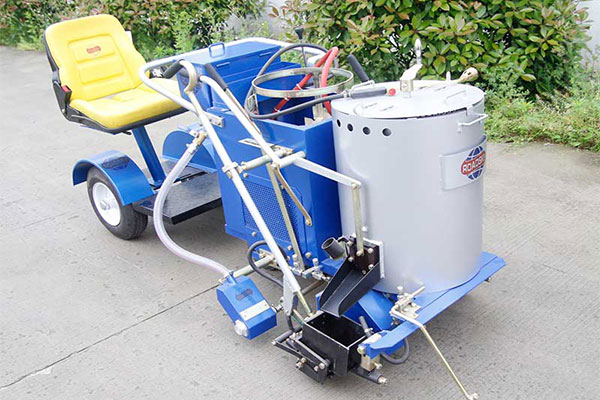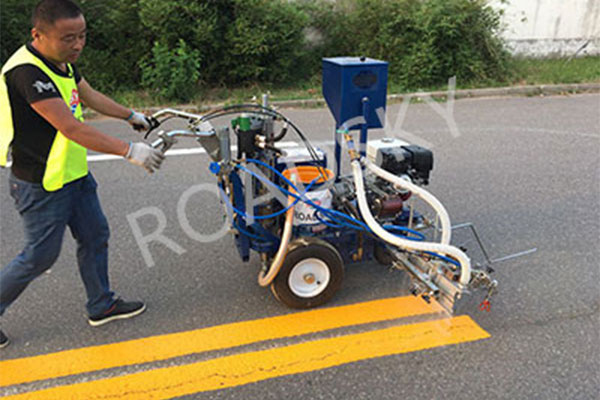What is a Road Marking Machine: A Comprehensive Overview
In today’s fast-paced world, efficient road systems and effective traffic management are critical to ensuring public safety. Road infrastructure development and maintenance require various tools, and the road marking machine is one of them.
What is a Road Marking Machine?
A road marking machine, also known as a pavement marking machine, is specialized equipment used to apply markings, lines, and symbols on road surfaces. These machines are designed to ensure accurate and uniform application of traffic markings, enhancing visibility and providing essential guidance to motorists and pedestrians.
Types of Road Marking Machines
1. Self-Propelled Road Marking Machines:
Self-propelled machines are the most common type used for road marking projects. These machines are equipped with a marking system, paint tanks, and an operator’s cabin. They offer high maneuverability, allowing the operator to control and adjust the marking process accurately. Self-propelled machines are typically used for large-scale road marking projects, such as highways and major roadways.
2. Hand-Pushed Road Marking Machines:
Hand-pushed machines are compact and lightweight, making them ideal for smaller-scale projects or areas with limited access. These machines are manually operated, requiring the operator to push or guide the machine along the desired marking path. Hand-pushed road marking machines are commonly used for pedestrian crossings, parking lots, or bike lanes.
3. Auxiliary Road Marking Machines:
Auxiliary machines are designed to support road marking operations. They include equipment like pre-heaters, thermoplastic applicators, and surface preparation machines. These auxiliary machines help prepare the road surface, preheat thermoplastic materials, and ensure proper adhesion and durability of the markings.
Functionality and Operation
Road marking machines utilize different technologies depending on the type of markings required:
- Paint-based Road Markings: Road marking machines equipped with paint-based systems use a spraying mechanism to apply paint onto the road surface. They are commonly used for marking white and yellow lines, as well as symbols, arrows, and crosswalks. The paint-based systems offer flexibility and ease of application.
- Thermoplastic Road Markings: Thermoplastic road marking machines apply preheated thermoplastic materials onto the road surface. These materials, usually in the form of solid pellets, are melted and applied in a molten state. Thermoplastic markings offer exceptional durability and visibility, making them ideal for high-traffic areas. They are commonly used for long-lasting lane dividers, stop lines, and zebra crossings.
Significance in Enhancing Traffic Safety
Road marking machines play a crucial role in enhancing traffic safety in several ways:
- Clear Guidance for Road Users: Well-marked roads provide clear guidance and essential information to drivers, cyclists, and pedestrians. Road marking machines ensure accurate and consistent application of markings, reducing confusion and promoting safer navigation on the roads.
- Increased Visibility: Road markings, whether paint-based or thermoplastic, significantly enhance visibility, especially during adverse weather conditions or at night. The reflective properties of some road marking materials improve their visibility and aid in guiding drivers along the correct lanes and pathways.
- Pedestrian Safety: Road marking machines are instrumental in creating safe pedestrian crossings, walkways, and shared spaces. Markings such as zebra crossings, pedestrian symbols, and dedicated bike lanes help protect vulnerable road users and encourage active transportation.
- Speed Control: Road markings, including speed limit markings and speed humps, assist in controlling vehicle speeds and improving overall road safety. They serve as visual cues for drivers, reminding them to adhere to speed limits and be cautious in specific areas.
- Accurate Lane Marking: Lane markings created by road marking machines ensure proper lane discipline, reducing the risk of accidents caused by lane drifting or improper overtaking. Clear and visible lane dividers enhance driver awareness and help prevent collisions.
Conclusion
Road marking machines are indispensable tools for the creation and maintenance of road markings, lines, and symbols. They play a crucial role in enhancing traffic safety by providing clear guidance, improving visibility, and organizing traffic flow. Whether it’s the application of paint-based markings or durable thermoplastic materials, road marking machines contribute to creating safer road environments for drivers, pedestrians, and cyclists alike. By ensuring accurate and uniform markings, these machines facilitate efficient traffic management and contribute to the overall goal of reducing accidents and promoting smoother transportation systems.



